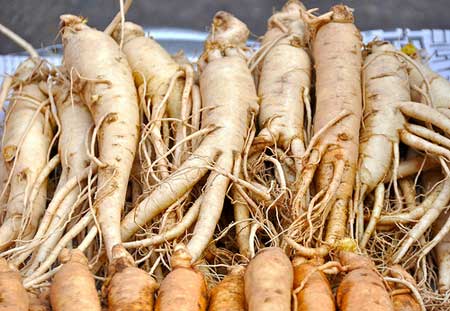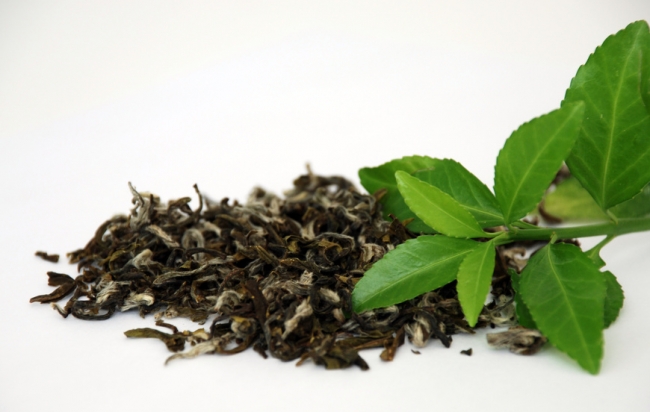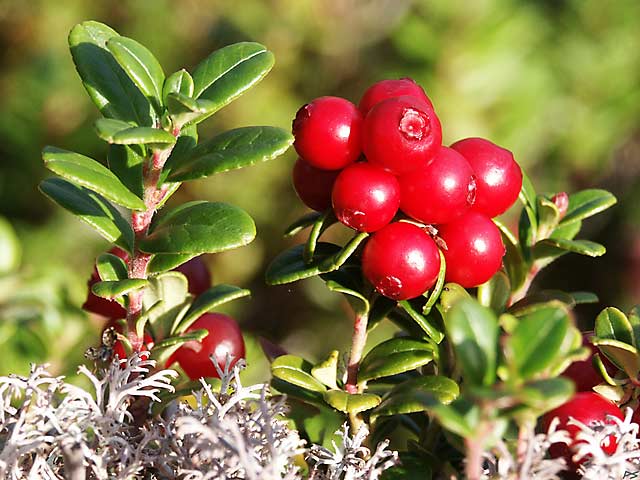
Diabetes is of two kinds: Type 1 and Type 2. Type 1 diabetes is an autoimmune disease which affects the pancreas. As a result of this, the pancreas either produce no insulin or too little of it. Type 2 diabetes is different. In this, the body builds up resistance towards insulin and therefore requires greater amount of insulin, every time.
Herbs that have been used in medicine from times immemorial have shown great potential in anti-diabetic activity. Different herbs achieve this in different ways. Some boost the insulin production. Some others boost the utilization of insulin. There are a few herbs which prevent the breakdown of starches into sugars while still others increase the sensitivity of the body towards insulin. Through all these means, the herbs effectively reduce diabetes and become useful in its treatment.
The best thing about these herbs are that they are the most natural form of ingesting chemicals that are useful in treating diabetes. However, care and advice must be sought before making use of a combination of the below listed herbs.
Garlic
Garlic has been long known to lower blood sugar. Recent research by Dr. Y.M. Lee has revealed some more amazing aspects of this herb. High blood sugar causes oxidative stress and free-radical damage to the cells. Being rich in anti-oxidants, garlic helps to prevent several renal and cardiac complications that arise from high blood sugar. Another revealing fact is that aged, black garlic has greater proportions of anti-oxidants compared to regular garlic. Thus, it is more effective against the damage done by diabetes. Onther ancillary benefits in battling diabetes include lowering bad cholesterol in the blood, promoting blood flow and thus regulating blood pressure.
Ginseng
Ginseng has long been used to promote body vigor, vitality and to prolong life. Ginsenosides which are found in ginseng have recently been credited with anti-diabetic activity. Dr. J.Z. Luo and Dr. L. Luo have found that these ginsenosides battle diabetes in two ways. Firstly, they reduce the insulin-resistance of the body. They also support and assist the beta cells in the pancreas which produce insulin and release it into the blood stream. They do this by increasing aerobic glycolysis through the stimulation of the beta-adrenoceptor. This direct effect of the ginseng root on the pancreas helps in combating diabetes.
Holy Basil
The holy basil has been extensively used in Indian systems of medicine like Ayurveda to treat diabetes. Dr.M.Bhat, the lead author for a paper on complementary and alternative medicine, reported that basil was extremely effective in relieving the condition of postprandial hyperglycemia. This is the excessive rise in blood-sugar levels immediately after eating. Basil prevents this by inhibiting the enzymes responsible for breaking down starch into sugars. Thus, it inhibits the activity of a-amylase in the saliva and the other glucosidases in the intestines and pancreas.
Onion
Recent research suggests that more than the apple, it is onion and garlic that help to keep the doctor away! Onion, like garlic, is rich in sulpha compounds. One chemical, allyly propyl disulphide also called as APDS, is of particular interest in treating diabetes. The liver is home to many insulin-deactivating sites that render insulin ineffective. Allyl propyl disulphide has a structure that competes with insulin in binding with the sites at the liver. This ensures that a greater number of insulin molecules are available in the blood to breakdown sugars. Apart from this, onion is also known lower the blood lipid levels and inhibit aggregation of platelets which results in a better overall blood circulation.
Bitter melon
Bitter melon is an important part of Chinese medicine. Research teams from the Shanghai Institute of Materia Medica and Garvan Institute of Medical Research in China have discovered how bitter melon helps diabetics. It contains four different bio-active compounds which activate the enzyme known as AMPK. This enzyme enables glucose uptake by regulating fuel metabolism in the body. Also, charatin and momordica present in bitter melon act as hypoglycemic agents in the bloodstream by mimicking the behavior of insulin.However, care should be taken and a physician consulted before taking this herb in conjunction with other anti-diabetic herbs to prevent possible cross-reactions.
Cinnamon
Cinnamon has traditionally been used for a treating a variety of problems including gastro-intestinal disorders, colds, flu and urinary infections. James.A.Duke, a doctorate from the U.S. Department of Agriculture says that even one eighth of a teaspoon of cinnamon triples the efficacy of insulin in the bloodstream. This is because in many cases, though the body produces sufficient insulin, it does not utilize it efficiently. Cinnamon helps by enhancing insulin’s ability to metabolize sugar. It contains the anti-oxidant glutathione and the the flavanoid, methylhydroxy chalcone polymer. These make even the fat cells more responsive towards insulin.
Olive
In a paper published in the British Journal of Nutrition in 2009, lead author Dr. T. Cvjetićanin, reports an amazing antidiabetic property of the olive leaf extracts. The extract interferes with the production of cytokines in the body. The cytokines are chemical molecules which produce inflammation. This reduced inflammation successfully blocks the destruction of beta cells in the pancreas. These beta cells are actively involved in the production of insulin. Thus, the insulin levels in the blood increase and diabetes is controlled.
Fenugreek
This is another herb that has been used in Ayurveda against diabetes. The oil extracted from its seeds is a potent insulin stimulant, a powerful anti-oxidant and a modulator of the immune system. Dr. K.Hamden has also discovered that fenugreek oil improved kidney and pancreatic damage in animals. Thus, fenugreek helps in lowering the blood sugar levels in diabetics. The herb can be ingested by drying and grinding then seeds into powder which is then taken in as a paste. However, fenugreek is also known the cause breathing difficulties, facial numbness, swellings, gas and dizziness.
Ginkgo biloba
Ginkgo has been used in medicine for centuries now. New research has revealed many important aspects of this herb which are medically useful. Research at the University of Texas Health and Science Center by Dr.Kudolo has shown that ginkgo reduces pallet aggregation. This results in increased circulation of the blood and thus prevents complications of diabetes that are circulation-based. In diabetics with falling insulin levels, ginkgo was also found to boost insulin production. However, the dosage of the herb is yet to be determined. Excessive use of the herb is known to cause headaches, nausea, vomiting, stomach upsets, diarrhea and even allergic skin reactions.
Lingonberry
In the northern climes of the world, lingonberry has been used medicinally by people for centuries. Dr. L.P. Beaulieu in his article in Phytotherapy Research has shown how lingonberry extract was used successfully in history to treat diabetes and the complications arising out of diabetes. The ability to treat diabetes was because of the flavonoids thatare present in the lingonberry extracts. Copper is an essential mineral that is used in the treatment of diabetes and lingonberries have good concentrations of this mineral. Being rich sources of omega-3 fatty acids, these berries also have associated anti-oxidant and anti-inflammatory properties.
Bliberry
A Japanese study on mice has shown that bliberry consumption reduces glucose levels in the blood and thus reduce the risk from diabetes. These berries are high in anthocyanin which affects the action of different proteins that are involved in fat metabolism and glucose transport. The anthocyanin activates a protein which in turn stimulates lipid breakdown (in muscles and liver) and modulates AMP-activated protein kinase (AMPK).The net effect is an increased sensitivity towards insulin which enhanced the hormone’s efficacy. Bliberry leaves are also known to reduce risks of long-term and chronic diabetic problems such as diabetic cataracts and diabetic retinopathy.




